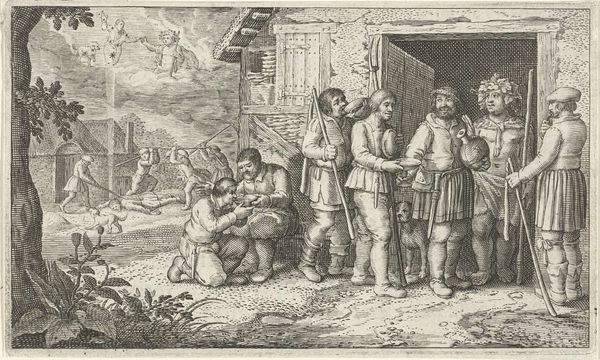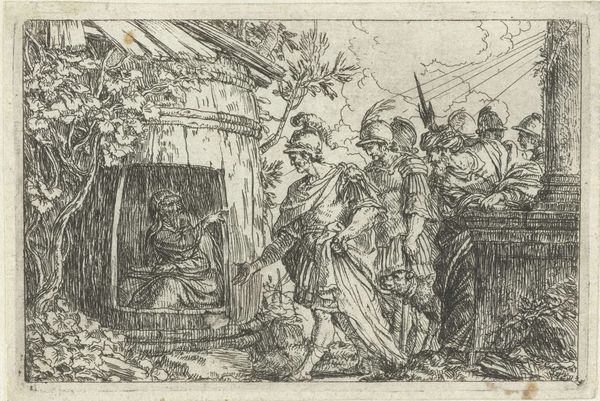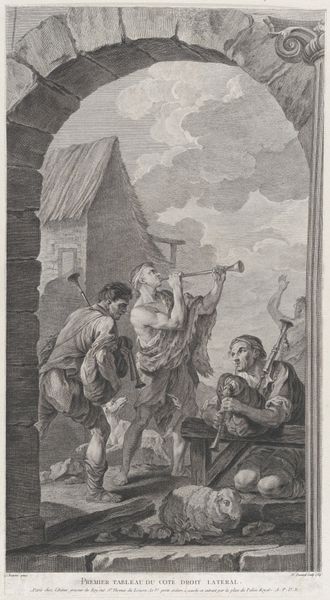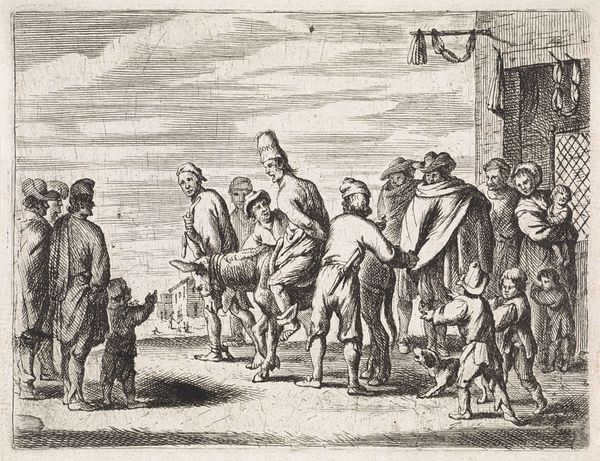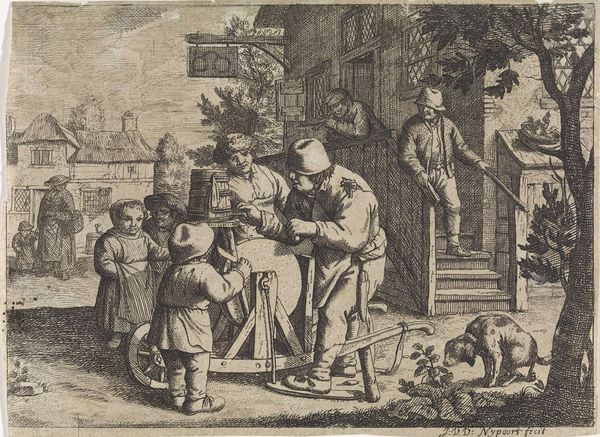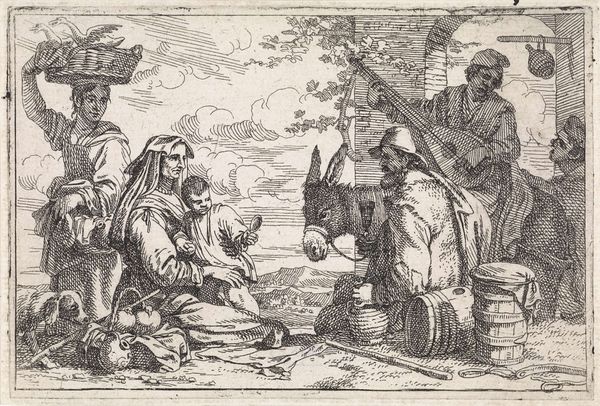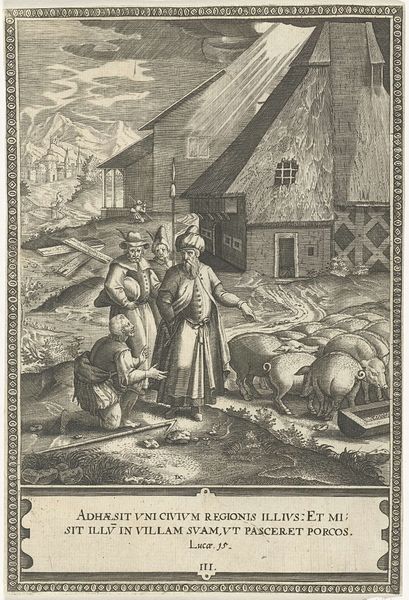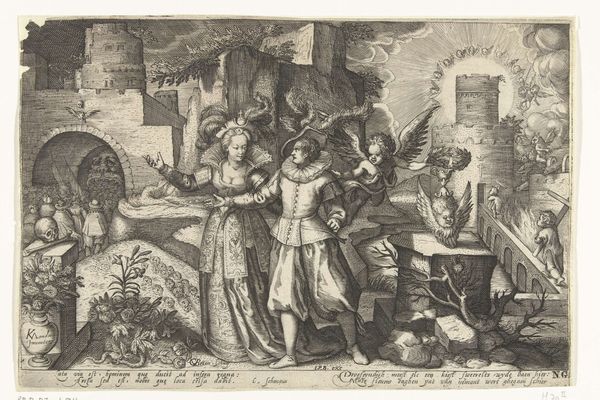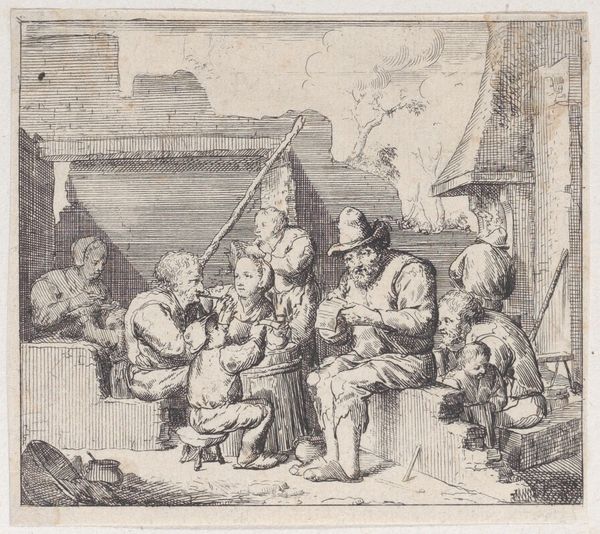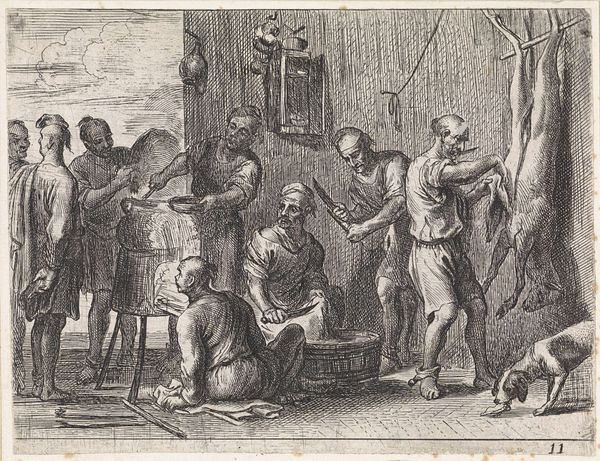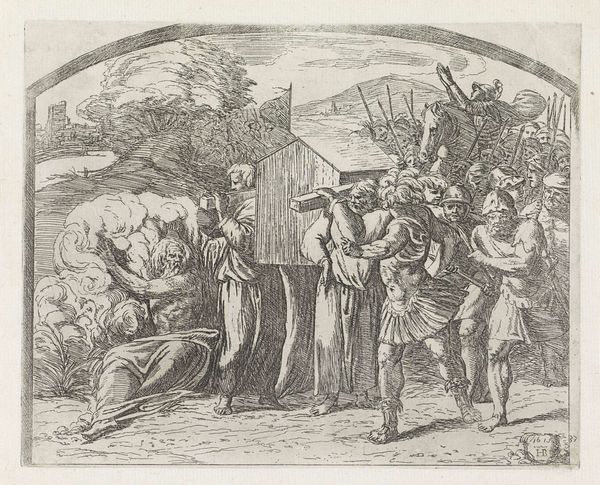
print, engraving
#
narrative-art
#
baroque
#
pen drawing
# print
#
figuration
#
genre-painting
#
history-painting
#
engraving
Dimensions: height 51 mm, width 66 mm
Copyright: Rijks Museum: Open Domain
Curator: Pieter Serwouters created this engraving, "Bacchus met wijn bij boeren", sometime between 1616 and 1657. Look closely at how Serwouters rendered it. It's currently held in the collection of the Rijksmuseum. Editor: What a dynamic piece! It has this wonderfully busy feel to it, even if it is only a print. You have revelry in the front with a brawl in the background, with so much contrasting tone achieved simply through line work. Curator: Exactly. Think about the labor involved. Each line carefully etched, transferring the initial drawing into a repeatable image. It was more than just illustrating; it was a process of making this narrative accessible to a wider audience through printmaking. It highlights the tension between high art traditions and accessible, almost "common" imagery. Editor: I agree. Considering this work historically, the image placement is significant. Placing Bacchus, the god of wine and pleasure, alongside rural peasantry suggests a fascinating interplay between social classes and popular cultural themes during that era. Do you think it legitimizes common merriment through a classicizing lens or satirizes their uncouth nature? Curator: Maybe both? Think about the market for prints like this. Did people hang them in their homes? What does owning and displaying this image signify about their social standing? We often consider prints as multiples that serve didactic or promotional purposes, but ownership complicates simple interpretations of function or reception. Editor: And the contrast adds tension, doesn't it? Bacchus dispensing wine with the chaotic violence brewing. Were viewers encouraged to interpret that as a natural outpouring, or as a disruption to communal stability? It is fascinating. Curator: It speaks to a larger cultural question; the consumption of art as an event, even one of class performance, rather than an individual beholding an autonomous artwork. Editor: So insightful. I walked in looking at figures and the energy, but now I am leaving with a layered understanding of production and viewership of 17th century print media. Thanks for that deeper dig. Curator: The joy is mine. Art has to be about the tangible but also, the less visible elements behind production that contribute equally to understanding the final product we have before our eyes.
Comments
No comments
Be the first to comment and join the conversation on the ultimate creative platform.
